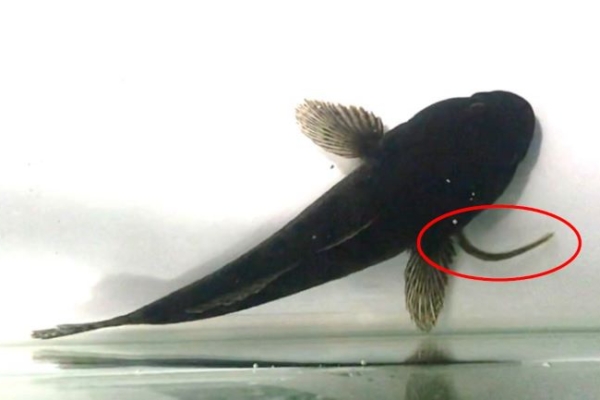Recent studies in Japan have revealed a fascinating survival instinct of eels. Eels, known for their slippery and elusive nature, have been found to escape from their predators even after being swallowed. This discovery sheds light on a previously unknown aspect of eel behavior.
With the help of X-ray technology, researchers at Nagasaki University in Japan observed Japanese eels (Anguilla japonica) being swallowed by dark sleeper gobies (Odontobutis obscura), only to wriggle out of their predator’s stomach and make a daring escape through the gills. This groundbreaking observation marks the first time such behavior has been documented in eels.
Marine biologists Yuha Hasegawa and Yuuki Kawabata from the university described this phenomenon as a unique observation of prey escaping from a predator’s digestive system. They noted that Japanese eels are currently the only fish species known to successfully evade capture even after being ingested by a predator.
Instances of prey voluntarily escaping from a predator’s digestive tract have been rarely observed in the past, predominantly among invertebrates. For example, beetles have been known to emerge unscathed from frogs after being ingested.
To understand how Japanese eels manage to flee the digestive tract of dark sleeper gobies and whether this escape behavior is intentional, researchers conducted experiments involving X-ray imaging of the eels inside the gobies.
In the study, 104 Japanese eels and 11 dark sleeper gobies were used. Barium sulfate was injected into the abdominal cavities and tails of the eels, enabling researchers to track their movements inside the predators using X-ray technology.
Subsequently, the researchers placed one Japanese eel at a time into a tank along with a dark sleeper goby to observe if the goby would prey on the eel. The team captured footage of 32 Japanese eels being swallowed by the gobies, with some eels completely entering the goby’s stomach. The eels exhibited circular motions inside the stomach, presumably attempting to find an exit route.
Among the 32 eels, 9 successfully employed a tail-first strategy to wriggle out through the goby’s gills, regaining their freedom. While the gobies were unharmed, the escaped eels sometimes showed signs of minor abrasions.
Not all eels managed to escape successfully, as two eels extended their tails toward the goby’s vent instead of the digestive tract.
Researchers suggested that the elongated shape of eels may aid in their escape, as when dark sleeper gobies swallow them headfirst, the eels’ tails are more likely to remain in the goby’s digestive tract.
The X-ray techniques employed in the study were deemed suitable for observing prey within a predator’s body and identifying the organs that hinder escape after capture.
The findings of this study were published on September 4 in the journal “Current Biology.”
In a separate incident in 2020, an astonishing photograph captured by American photographer Sam Davis showcased an American eel (Anguilla rostrata) escaping from the throat of a flying heron. This event further exemplifies the remarkable survival instincts of eels.
According to a report by Live Science, Davis initially believed he had photographed a snake or eel biting the heron’s neck while it was flying in Delaware. It was only during the photo editing process at home that Davis realized it was an American eel emerging from the heron’s throat. The eel had been swallowed by the heron, but instead of perishing immediately, it managed to wriggle out through the heron’s stomach and neck skin, creating a stunning visual spectacle.
These discoveries shed new light on the extraordinary adaptability and survival strategies of eels in the face of predators.

